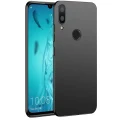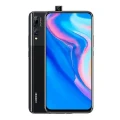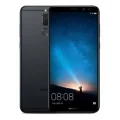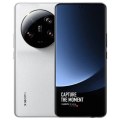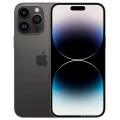- Awesome page
- Latest Mobile
- Smartphones
- Samsung Galaxy A10
Samsung Galaxy A10
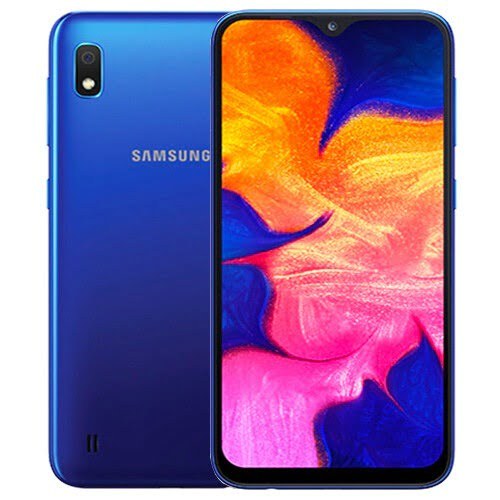


Samsung Galaxy A10 Price in Bangladesh
The Samsung Galaxy A10 Price in Bangladesh is BDT 12,999. This dual-SIM smartphone runs on Android 8.0 Oreo and features a 6.22-inch HD+ (720×1520 pixels) Infinity V Display with a 19:9 aspect ratio, offering a vibrant viewing experience.
Powered by a 14 nm Octa-core processor, the Galaxy A10 is equipped with 2GB of RAM and 16GB of internal storage, which can be expanded up to 512GB via a microSD card. The device sports a dual-camera setup on the rear, featuring a 13MP primary sensor with an f/1.9 aperture and a 5MP secondary sensor with an f/2.2 aperture for ultra-wide-angle photography. The Live Focus feature enhances your photography, while the 5MP front camera, equipped with an In-Display Flash and selfie focus mode, is perfect for high-quality selfies.
Available in Charcoal Black and Ocean Blue, the Samsung Galaxy A10 is powered by a 3400mAh battery, ensuring all-day usage. The device also includes useful features such as Fast Face Unlock, an accelerometer, proximity sensor, and virtual light sensor. The Samsung Galaxy A10 Price in Bangladesh reflects its value as an affordable, feature-packed smartphone ideal for everyday use.
Specifications
General
| Model | Samsung Galaxy A10 |
| Announced | 2019, February |
| Released | 2019, March |
| Status | Available |
| Official price | 2GB 32GB ৳11,999 |
| Unofficial price | 2GB 32GB ৳11,500 |
Design
| Dimensions | 155.6 x 75.6 x 7.9 mm (6.13 x 2.98 x 0.31 in) |
| Weight | 168 g (5.93 oz) |
| Colors |
Blue, Black, Red |
Network
| Technology | GSM / HSPA / LTE |
| 2G Network |
GSM 850 / 900 / 1800 / 1900 - SIM 1 & SIM 2 (dual-SIM only) |
| 3G Network |
HSDPA 850 / 900 / 1900 / 2100 |
| 4G Network |
LTE band 1(2100), 2(1900), 3(1800), 5(850), 7(2600), 8(900), 20(800), 38(2600), 40(2300), 41(2500) |
| GPRS <strong>GPRS</strong> (General Packet Radio Service) is a packet oriented mobile data service on the 2G and 3G cellular communication system's global system for mobile communications (GSM), Generally, GPRS is used for the purpose of wireless data transfer, such as sharing pictures and videos or browsing the Internet via a mobile phone connection. | |
| EDGE <strong>EDGE</strong> (Enhanced Data GSM Environment) is a wireless network technology generally considered the next step in the 2G network offers data transfer rates up to four times faster than ordinary GSM networks, Generally, EDGE is used for the purpose of wireless data transfer, such as sharing pictures and videos or browsing the Internet via a mobile phone connection. | |
| Speed | HSPA 42.2/5.76 Mbps, LTE Cat4 150/50 Mbps |
Display
| Display Type <strong>Display Technology => </strong> A number of display technologies and types used in mobile phones => TFT (Thin Film Transistor), IPS (In-Place Switching), OLED (Organic Light Emitting Diode), AMOLED (Active-Matrix Organic Light-Emitting Diode), Super AMOLED (an even advanced version of AMOLED), Resistive Touchscreen (Resistive touchscreens contain two layer of conductive material with a very small gap between them which acts as a resistance), Capacitive Touchsceen (Capacitive touchscreen technology consists of a layer of glass coated with a transparent conductor) | IPS LCD capacitive touchscreen, 16M colors |
| Size | 6.2 inches, 95.9 cm2 (~81.6% screen-to-body ratio) |
| Resolution | 720 x 1520 pixels, 19:9 ratio (~271 ppi density) |
Camera
Main camera
| Camera Setup | Single |
| Primary <strong>Camera</strong> is able to capture photographs and usually videos, The most important characteristics of a camera are the resolution (measured in megapixels), lens focus type (fixed or automatic), higher megapixel cameras are known to capture higher quality photos, but not always a good measurement of the photos quality. |
13 MP, f/1.9, 28mm (wide), AF |
| Features |
LED flash, panorama, HDR |
| Video | 1080p@30fps |
Selfie camera
| Camera Setup | Single |
| Primary <strong>Camera</strong> is able to capture photographs and usually videos, The most important characteristics of a camera are the resolution (measured in megapixels), lens focus type (fixed or automatic), higher megapixel cameras are known to capture higher quality photos, but not always a good measurement of the photos quality. |
5 MP, f/2.0 |
Hardware
| Chipset <strong>Chipset</strong> is a group of integrated circuits designed to perform one or a more dedicated functions, often with real time computing constraints, Popular smartphones are equipped with more advanced embedded chipsets that can do many different tasks depending on their programming. | Exynos 7884 Octa |
| CPU <strong>CPU</strong> (Central Processing Unit) mostly known as processors, CPU processes instructions in order to carry out certain functions that make your device operate properly. Processors are often described as the brain of computers, smartphones and tablets, Smartphones and tablets rely on processors to carry out their every task, Processors are an incredibly important factor in selecting any type of computing device, including your smartphone. | Octa-core (2x1.6 GHz & 6x1.35 GHz) |
| GPU <strong>GPU</strong> (Graphics Processing Unit) is a single-chip processor designed to rapidly manipulate and alter memory to accelerate the creation of images in a frame buffer intended for output to a display, This includes things such as lighting effects, object transformations, and 3D motion. | Mali-G71 MP2 |
| RAM (Memory) <strong>RAM</strong> (Random Access Memory) is a type of computer memory that can be accessed randomly, any byte of memory can be accessed without touching the preceding bytes that allows information to be stored and accessed quickly from random locations. RAM is the most common type of memory found in computer systems, smartphones, tablets and other electronic devices. | 2 GB RAM |
| Internal Storage <strong>Internal Storage</strong> is a data storage space (flash memory) mostly used in smartphones, tablets and other electronic devices where operating system, apps, music, photos, videos, files and other user data Is stored. | 32 GB |
| Sensors <strong>Sensors</strong> are electronic components that detects and responds to some type of input from the physical environment. The specific input could be light, heat, motion, moisture, pressure and location, The output is generally a signal that is converted to use in computing systems, a location sensor, such as a GPS receiver is able to detect current location of your electronic device. |
Accelerometer, proximity |
Connectivity
| Bluetooth <strong>Bluetooth</strong> is a wireless communications technology for exchanging data between mobile phones, headsets, computers and other network devices over short distances without wires, Bluetooth technology was primarily designed to support simple wireless networking of personal consumer devices. | 4.2, A2DP, LE |
| Infrared <strong>Infrared</strong> connectivity is an old wireless technology used to connect two electronic devices. It uses a beam of infrared light to transmit information and so requires direct line of sight and operates only at close range. | |
| USB | microUSB 2.0 |
| GPS <strong>GPS</strong> The Global Positioning System is a satellite-based radio navigation system, GPS permits users to determine their position, velocity and the time 24 hours a day, in all weather, anywhere in the world, In order to locate your position, your device or GPS receiver must have a clear view of the sky. | Yes, with A-GPS, GLONASS, BDS |
| NFC <strong>NFC</strong> (Near field communication) is a set of standards for smartphones and similar devices to establish peer-to-peer radio communications with each other by touching them together or bringing them into proximity, usually no more than a few inches. |
Battery
| Battery Type <strong>Battery Type => </strong> Cell phones run on various kinds of batteries depending on the manufacturer, phone size or shape and features. There are basically four types of cell phone batteries => Lithium Polymer, Lithium Ion, Nickel Metal Hydride and Nickel Cadmium. | Non-Removable Li-Po |
| Capacity <strong>Battery Capacity</strong> is a measure (typically in Amp-hr) of the charge stored by the battery, and is determined by the mass of active material contained in the battery. The battery capacity represents the maximum amount of energy that can be extracted from the battery under certain conditions. | 3400 mAh battery |
| Charging Charging | Fast battery charging 15W |
Samsung Galaxy A10 Review – Your Next Affordable Powerhouse
Are you in the market for a new smartphone that won’t break the bank? The Samsung Galaxy A10 might just be the perfect match for you. Positioned as a budget-friendly option, the Galaxy A10 offers a surprising array of features that make it stand out in the crowded smartphone market. Whether you’re a tech enthusiast, a savvy shopper, or a loyal Samsung fan, this review will provide you with an in-depth understanding of what the Galaxy A10 brings to the table. From design to performance, we’ll cover every aspect to help you decide if this is the right phone for you.
Design and Display
When you first lay eyes on the Samsung Galaxy A10, its sleek and modern design immediately grabs your attention. The phone boasts a 6.2″ HD+ Infinity-V Display, which provides an immersive visual experience. The teardrop notch at the top of the screen houses the front camera, allowing for an expansive display area that’s perfect for watching videos and browsing social media.
In terms of build quality, the A10 features a plastic back and frame, which is typical for smartphones in this price range. Despite this, it feels sturdy and comfortable to hold. The glossy finish on the back adds a premium touch, though it may be prone to fingerprints. The power and volume buttons are conveniently located on the right side, making them easy to reach.
The clarity of the display is another strong point. With a resolution of 720 x 1520 pixels, the Galaxy A10 delivers sharp images and vibrant colors. Although it’s not as crisp as higher-end models, the display quality is more than sufficient for everyday use. The adaptive brightness feature ensures that the screen remains visible in various lighting conditions, from dimly lit rooms to bright sunlight.
Performance and Battery Life
Under the hood, the Samsung Galaxy A10 is powered by an Exynos 7884 Octa-core processor. This chipset, combined with 2GB of RAM, ensures smooth performance for most tasks. Whether you’re multitasking between apps, streaming videos, or playing casual games, the A10 handles it all with ease. However, it may struggle with more demanding applications and heavy multitasking.
One of the standout features of the Galaxy A10 is its long-lasting 3,400mAh battery. In real-world usage, this translates to an entire day of moderate use without needing to recharge. From morning alarms to late-night browsing, you can rely on the A10 to keep up with your daily routine. The phone supports 10W charging, which is reasonably fast for a device in this category.
Battery optimization features in the One UI help extend battery life even further. By managing background processes and limiting power-hungry apps, the A10 ensures that you get the most out of every charge. For those who are always on the go, the combination of efficient performance and a robust battery makes the Galaxy A10 a reliable companion.
Camera Quality
The Samsung Galaxy A10 is equipped with a 13MP rear camera and a 5MP front camera, both of which offer decent performance for casual photography. The rear camera features an f/1.9 aperture, which allows for good low-light performance and depth-of-field effects. Whether you’re capturing landscapes or close-ups, the A10’s camera delivers vibrant and detailed photos.
The front camera, housed in the teardrop notch, is perfect for selfies and video calls. With an f/2.0 aperture, it performs well in well-lit environments, producing clear and natural-looking selfies. However, in low-light conditions, the quality may suffer, resulting in grainy images.
The camera app is user-friendly and comes with various modes and features, such as panorama, pro mode, and beauty filters. Video recording is supported at 1080p resolution, offering smooth and stable footage. Overall, while the camera setup may not compete with flagship models, it provides ample functionality for everyday photography needs.
Software and User Experience
The Samsung Galaxy A10 runs on One UI, Samsung’s custom skin based on Android. One UI is known for its intuitive design and user-friendly features, making it a pleasure to use on the A10. The interface is clean and easy to navigate, with large icons and a thoughtful layout that minimizes clutter.
One of the highlights of One UI is its focus on one-handed use. The design places interactive elements within easy reach, ensuring that you can comfortably operate the device with one hand. Additionally, the dark mode and blue light filter options enhance usability in various lighting conditions, reducing eye strain during prolonged use.
Bloatware is minimal, and most pre-installed apps are useful and relevant. The Galaxy Store offers a wide range of apps and themes to customize your device further. Regular software updates from Samsung ensure that the A10 remains secure and up-to-date with the latest features and improvements.
Value for Money
When it comes to value for money, the Samsung Galaxy A10 is hard to beat. Priced competitively, it offers a well-rounded package that covers all the essentials without compromising on quality. Compared to other smartphones in its price range, the A10 stands out with its reliable performance, long battery life, and user-friendly software.
While there are some trade-offs, such as the plastic build and limited RAM, these are understandable given the budget-friendly price point. The A10 delivers a balanced experience that meets the needs of most users, making it an excellent choice for those looking for a dependable smartphone without breaking the bank.
In comparison to other budget smartphones, the Galaxy A10 holds its own with a strong value proposition. It competes favorably against models from brands like Xiaomi and Motorola, offering a trusted name and solid performance.
Conclusion
In summary, the Samsung Galaxy A10 is a compelling option for anyone seeking an affordable yet capable smartphone. Its strengths lie in its sleek design, vibrant display, reliable performance, and long-lasting battery. While it may not offer all the bells and whistles of higher-end models, it provides a well-rounded experience that caters to the needs of tech enthusiasts, smartphone shoppers, and Samsung fans alike.
If you’re in the market for a budget-friendly device that doesn’t compromise on quality, the Galaxy A10 is worth considering. Its combination of features and value makes it a standout choice in the crowded smartphone landscape.
Ready to make the Galaxy A10 your next smartphone? Share your thoughts, ask questions, and explore more about this fantastic device. Your perfect smartphone experience is just a click away.































































































